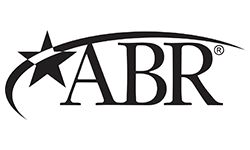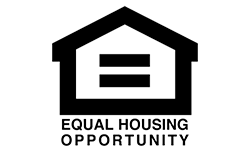When it comes to tile, you have a lot more options than you’d think.
n This Article
- What to Know
- Rectangle Tile Patterns
- Square Tile Patterns
- Geometric Tile Patterns
- Composite Tile Patterns
:max_bytes(150000):strip_icc():format(webp)/white-kitchen-open-shelving-2464001-0003_2-2000-424930d5ca8d4abaa09be450bea6793b.jpg)
The tile you select can be transformative. “Tile is a great way to introduce a pattern into a space, especially a bathroom, kitchen, or dining room,” Gena Kirk, Vice President of Corporate Studio, Design, at KB Home says. And while tile isn’t necessarily permanent, it does require time and money to install, which makes opting for something timeless a strategic decision. This doesn’t mean you’re limited to white subway tile—quite the opposite. Consider this your guide to the tile layout patterns that aren’t too trendy and will always look good.
- Gena Kirk is the Vice President of Corporate Studio, Design, at KB Home.
- Jessica Stambaugh is the Principal Designer at her namesake firm in Nashville, Tennessee.
- Megan Coleman is the Director of Sales at Clayhaus Tile.
What to Know
Price
Factors like craftsmanship, material, pattern, and more can all impact the cost of tile. And while a couple dollars per square foot may not seem like a big difference, it adds up quickly—especially when you account for overage and install. If you have your heart set on a certain one though, Jessica Stambaugh, interior designer at her namesake firm in Nashville, Tennessee, has a recommendation: Get creative and cut down on how much space you’re covering, like only using it as a backsplash or border.
Placement
Tile is decorative, but in many cases it’s also functional. “You have to think about how you’re interacting with it,” advises Stambaugh. “If you’re working with a high traffic wet area like a shower floor, you need to have smaller tiles because you’ll have more grout and it’ll be safer with slippage.” Naturally soft porous materials, such as sandstone, are vulnerable to liquid stains, scratches, and dents, which means you won’t want to use them in bathrooms or kitchens.
Design
An important consideration in selecting tile is how it will work with the rest of the elements in your space, whether that means you make it the star of the show or it needs to complement what’s already there. When you’re working with standard neutrals and materials, this can be easy, but according to Kirk, “introducing unconventional colors or patterns with tile can completely transform the feel of a room.” Stambaugh agrees, adding that “if there’s an opportunity to make a big statement, I think you do that, because it can get lost sometimes as just an accent.”
Scale
Tile scale, room size, and pattern intricacy are all intertwined. When one of the three are off, the whole room feels off. “If you’re working with big 12 by 24 inch pieces, it might look cleaner to install it as a typical running bond and not try to do something like a herringbone that may look a little clunky,” Stambaugh provides as an example.
Rectangular Tile Patterns
When you think about rectangular tile, you probably think about brick-like proportions, but the shape can also be long and skinny like a plank.
:max_bytes(150000):strip_icc():format(webp)/TypesofTile_TypesofTile_Rectangular-f319b22f250a46459a127057e216c2ac.jpg)
Running Bond
This execution is the most traditional, often associated with bricks and the subway tile look. “Bakeries, delis, coffee shops like to use this pattern, as well as residential kitchen remodels,” shares Megan Coleman, Director of Sales at Clayhaus Tile. If you have decision paralysis or are concerned about resale, this is a safe way to go. For a more unique take, try it vertically.
Stacked
“The stack is very timeless, whether in a more contemporary setting or a more modern setting,” confirms Stambaugh. If you already know you like staggered bonds but want something that feels more current, the stacked look is worth exploring.
Cross Hatch
With a similar look to the cross hatching art technique, this pattern involves a repetitive /layout of multiple rectangle tiles laid one way together and the same amount laid next to them the other way.
Herringbone
There’s a reason why it’s so prominent in hardwood, carpet, and even jewelry as well. “Simple and elegant, herringbone patterns have a dynamic design that naturally becomes a focal point,” Kirk says.
Chevron
Basically herringbone’s sister, chevron tiles are cut at a 45-degree angle so they can come together like an arrow.
Square Tile Patterns
Something so basic isn’t bad—it’s a jumping off point. With all the colors, patterns, and materials these days, the possibilities are limitless.
:max_bytes(150000):strip_icc():format(webp)/TypesofTile_TypesofTile_Square-9fc944eec7d8466a993d7db189d2fc31.jpg)
Grid
Though the offset look is most popular with rectangular tiles, the stacked look is what wins with squares. The application is so big it’s even been used on countertops.
Staggered Bond
Just like the grid, give or take a bit, this layout is most successful when using the same tiles throughout.
Diamond
Most commonly found on kitchen floors with larger tiles, they stand out the most when laid out in a checkerboard pattern.
Geometric Tile Patterns
Outside of the standard rectangles and squares, there’s only a couple of commonly used shapes. Luckily, they both create chic results.
:max_bytes(150000):strip_icc():format(webp)/TypesofTile_TypesofTile_Geometric-0d96c217998f4de0b7e7365a87112d44.jpg)
Scallop
This style may not feel timeless for every space, Stambaugh admits, but it can “if you’re influenced by Art Deco, for example, or if you’re by the sea and want it to emulate a shell.”
Hexagon
“A hexagon is very timeless, and most appropriate when used on the floor,” Stambaugh advises. With so many different materials and colors available, there’s a lot you can do with them to create patterns, borders, and even letters.
Composite Tile Patterns
Why limit yourself to a single shape and size? Mix it up to create any pattern you desire, especially these four timeless ones.
:max_bytes(150000):strip_icc():format(webp)/TypesofTile_TypesofTile_Composite-5b375203e93e471ba3c5cc10ec09c9e8.jpg)
Windmill
To create an abstract interpretation of a windmill, rectangles connected at the top and bottom form a square with a smaller square in the middle.
Basketweave
Just as baskets don’t go out of style, neither do basketweaves. Rectangular tiles mimic the over-under technique while small squares act as the background in-between.
Parquet
A nod to inlaid wood, this is an intricate pattern of many geometric shapes involving a criss-cross layout.
Octagon Dot
A combination of octagonal tiles with a smaller square diamond in the middle, this classic pattern, especially ideal for a bathroom, creates visual interest through contrasting shapes and colors.
Quincy Bulin




